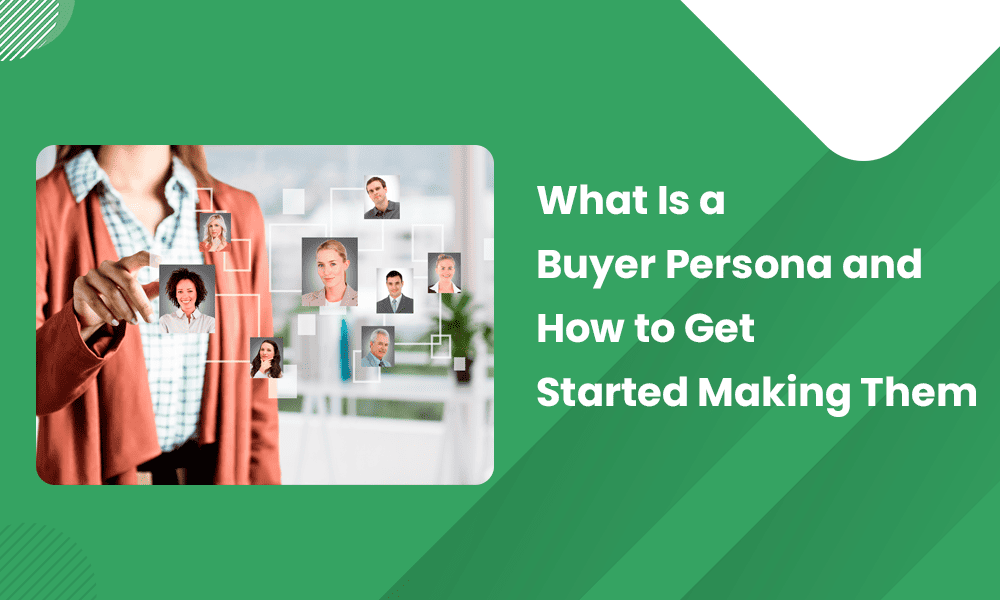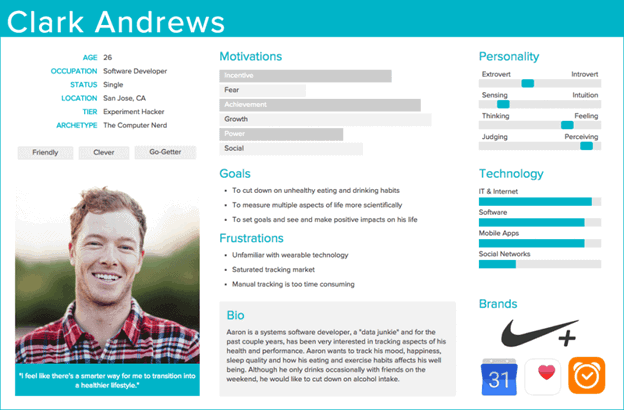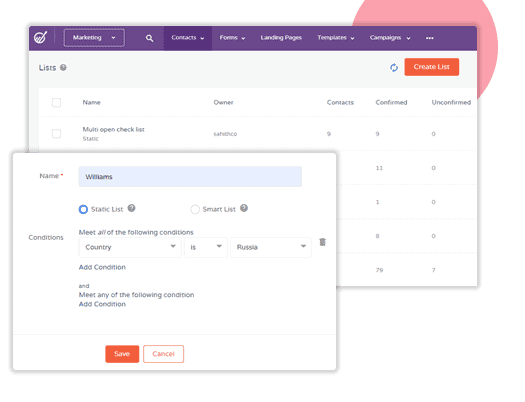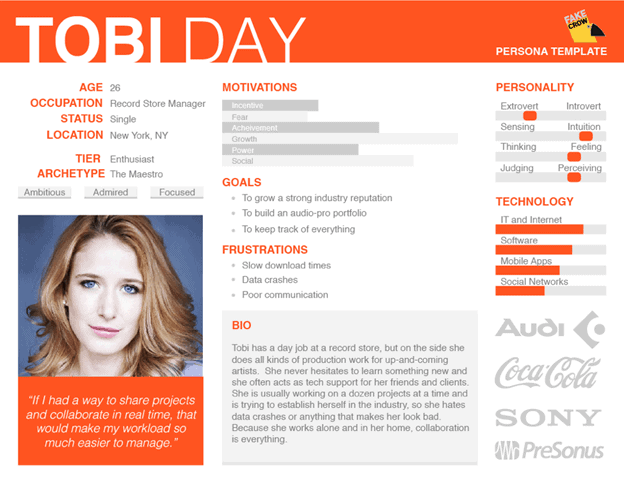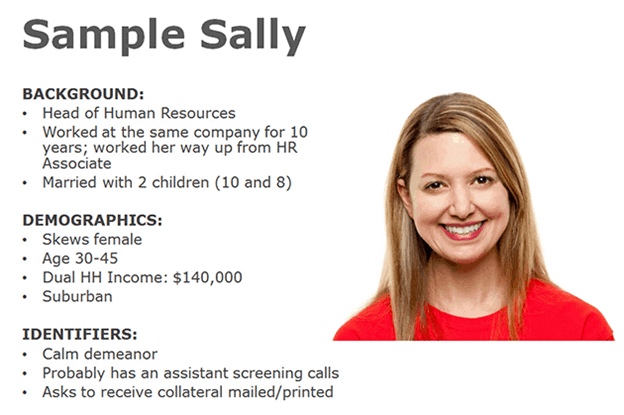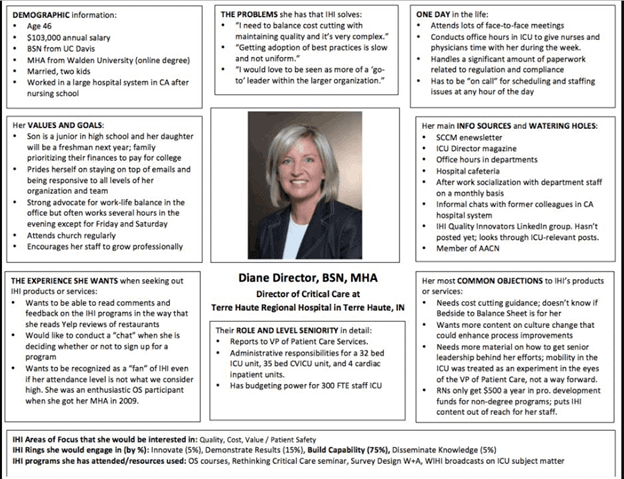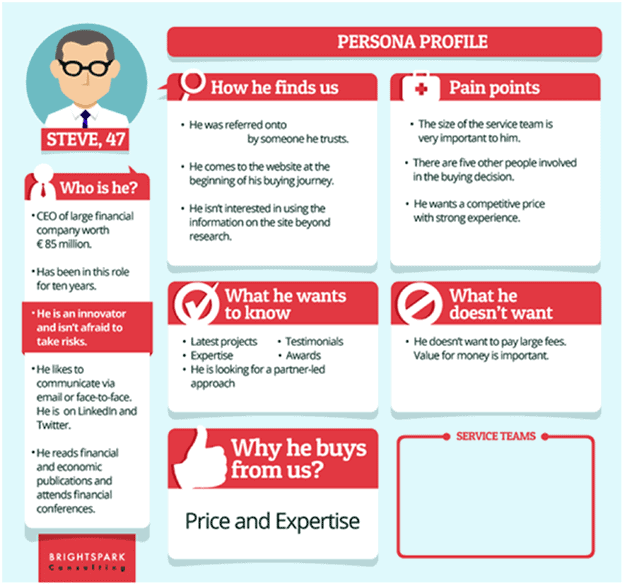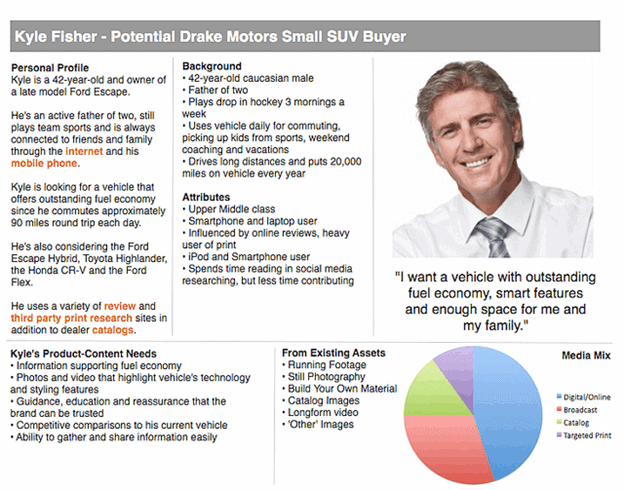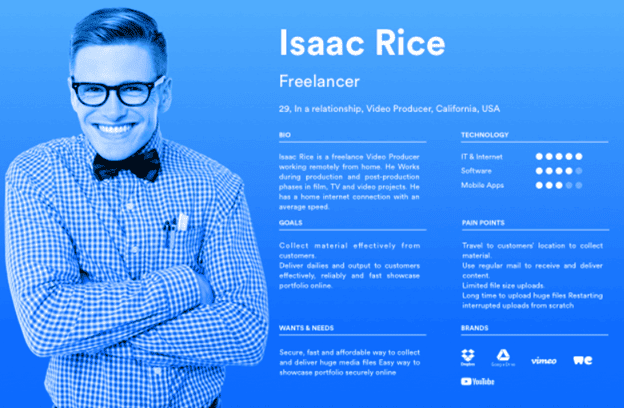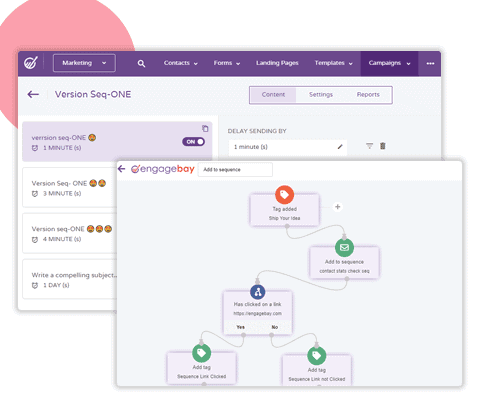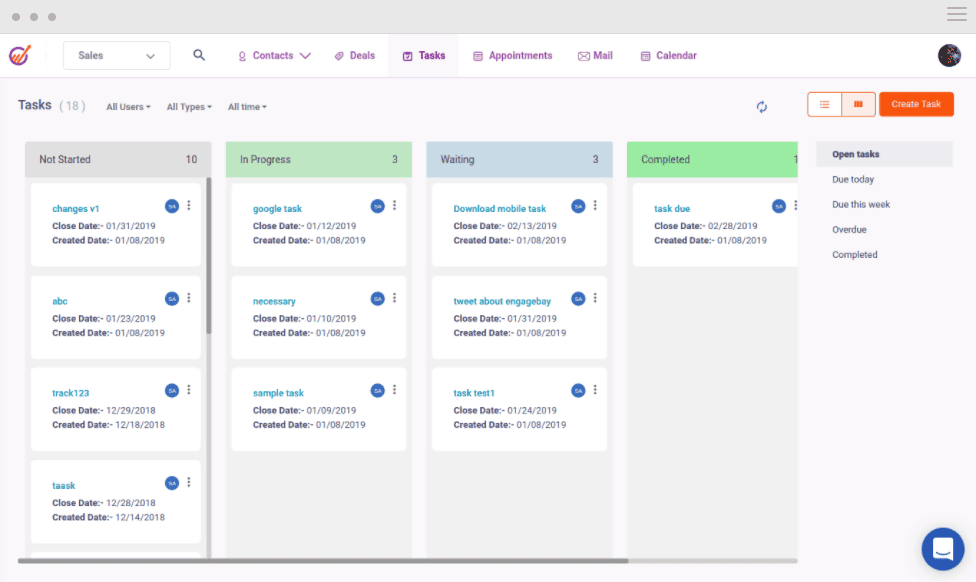Let’s know more about buyer personas. Who is your customer? How will they behave?
It’s hard to answer that last question with total accuracy, right? After all, at the end of the day, people will act unpredictably. Who can say what they will or won’t do?
Unlock the secrets of your customers’ minds! Who are they really? And how can you anticipate their every move?
Forget crystal balls and unreliable guesses.
Discover the power of buyer personas—the ultimate crystal ball that reveals the future behaviors of your customers, based on their similarities with others.
Don’t be left in the dark—get your hands on the ultimate tool for understanding your customers and staying one step ahead in the game.
What if you had a crystal ball of sorts that predicted the future behaviors of your customer based on others just like them?
You do have such a crystal ball in your possession, or at least you should. It’s known as a buyer persona.
Table of Contents
What Are Buyer Persona?
Buyer personas are an audience amalgamation boiled down to a single, often fictional person.
You use this person to represent a portion of your audience, predicting their future behavior based on real data. You’ll often have a slew of these personas you rely on.
To even begin to create buyer personas, you’d identify target members of your audience.
Then you’d dig deep, researching demographics and other important information about your customers and prospects. Finally, you’d compile this information into a series of personas.
Here’s an example of what we mean.
Image courtesy of Adobe
This buyer persona has the full person’s name, Clark Andrew. You don’t need to do this if you don’t want to. Most personas have fun, snappy nicknames.
For instance, since Clark here has frustrations with how time-consuming manual tracking is, maybe you’d call him Time-Consuming Clark.
Whatever makes him easier to remember.
You’ll want to have the gender, age, marital status, and occupation of your persona all outlined and included.
A good persona also has personality traits, what motivates this person, their interests and hobbies, and their goals.
More importantly, you need to know their pain points, challenges, frustrations, and problems. Otherwise, you can’t solve these issues with your products and services.
So what’s the point of all this? Is Clark Andrew even a real person? Yes and no. That picture could be anybody. It’s used to represent a mid-20s single man who works as a software developer.
You wouldn’t have to look hard to find a person like that. Time-Consuming Clark isn’t just one person, then, but many people.
That’s the whole point of making buyer personas. You can segment your audience into these groups of “people” with faces, personalities, and real problems.
According to Marketing Insider Group:
-
- 56% of companies generated higher quality leads using buyer personas
- 36% of companies have created shorter sales cycles using buyer personas
- 24% of companies generated more leads using buyer personas
- 93% of companies who exceed lead and revenue goals segment their database by buyer persona
By identifying and working to overcome the pain points of each buyer persona, you’re theoretically solving the pain points of a huge audience segment.
Behavior-based contact segmentation is so easy with EngageBay
The Types of Buyer Personas
- 1. Skeptical Sally or Steve
- 2. Innovator Ivan or Irene
- 3. Friendly Frank or Fiona
- 4. Analytical Anna or Al
- 5. Collaborative Chris or Claire
- 6. Decisive Danny or Danielle
You’ll come across far more personas than Time-Consuming Clark. In fact, marketing experts agree you might segment your audience into five buyer personas.
Let’s talk more about them now.
1. Skeptical Sally or Steve
A Skeptical Sally or Steve has arrived on your website and learned a little bit about you. They’re in no rush to make a purchase. If they do it all, it will happen on their schedule.
Convincing Skeptical Sally or Steve that you have a good solution for them will take time. You might begin with emails instead of cutting to the chase via a phone consultation.
While Skeptical Sally or Steve will give you their time and their patience, you have to work that much harder to convince them you’re worth it.
If you get too pushy, they will abandon their efforts and you’ll lose them.
Once you get Skeptical Sally or Steve to trust in you, you can probably make the sale, but not a moment before.
2. Innovator Ivan or Irene
The innovative type of customer has a strong sense of creativity. They don’t mind pushing boundaries, either.
Innovator Ivan or Irene won’t want to hear your same old tired sales spiel. You know, the one you’ve recited to your customers a hundred times.
Instead, Innovator Ivan or Irene wants to brainstorm with you. They’ll share their problems and challenges and actively work with you to come up with a solution.
Listen to their ideas, even if you don’t ultimately use them.
As you continue your professional relationship with an Innovator Ivan or Irene, you might notice they have so many plans and big ideas they kind of lose the point a little.
Make sure you keep them on track so you can move them towards a purchase or customer conversion.
3. Friendly Frank or Fiona
Sometimes also called Relationship Ron or Renee, next, there’s Friendly Frank or Fiona. This person will rely on your nurturing and engagement perhaps more than any other persona.
A Friendly Frank or Fiona type always strives to strengthen their own working relationships. They do awesome in a team setting, they like solving problems, they’re creative, and they have a lot of enthusiasm.
Again, listening to their ideas matters a lot here. The excitement of Friendly Frank or Fiona might naturally bleed over to you, but make sure you stay professional in your enthusiasm.
Try to curb your conversations about specs or other technical information unless they ask for it. This information might bore them.
4. Analytical Anna or Al
An Analytical Anna or Al type never makes a decision without consulting spreadsheets, data, or analytics.
They’re huge into using what has worked and applying it to what could work today. The longer a method or tactic has existed, the more Analytical Anna or Al trusts in it.
That makes deviating from the old guard difficult with this type of person, even if you must do so sometimes. In this scenario, Analytical Anna or Al will proceed extremely cautiously.
To eliminate some of their doubt, have your own data, stats, and figures to show just how and why your product/service works.
Sometimes you have to wait a while for Analytical Anna or Al to comb through all the data thoroughly. They may do so twice before coming to a decision.
If you’re patient and don’t rush things, you could have a sale or a new customer.
5. Collaborative Chris or Claire
Collaborative Chris or Claire also goes by another C name, Consensus Chris or Claire. That’s because this type of person relies on the opinions of the crowd to guide their choices.
They’re somewhat flexible and quite respectful, too.
To really convince Collaborative Chris or Claire to become your customer, you need to use lots of social proof.
Reviews and testimonials will especially come in handy here. You can also introduce a sense of FOMO to move a Collaborative Chris or Claire towards a decision.
Know that again, patience will do you well. The collaborative aspect of a Collaborative Chris or Claire often means deliberating in a group setting.
Once everyone has come to a consensus, things can proceed.
6. Decisive Danny or Danielle
Also called shakers, Decisive Danny or Danielle is the last persona you will come across. As the name tells you, a Decisive Danny or Danielle has no problem making a choice for themselves.
They have an assertive personality that favors winning and achieving great results fast. The downside to this? Sometimes this persona can come across as demanding, pushy, and very “me, me, me.”
If you’re willing to meet Decisive Danny or Danielle halfway, you can achieve great things. You can’t ever waver on the quality of your products/services.
If you’re not totally convinced you’re selling something great, you won’t convince Decisive Danny or Danielle, either.
Unlike Collaborative Chris or Claire, a Decisive Danny or Danielle can make decisions in a snap. This works to your advantage, provided it’s the right decision.
Buyer Personas Examples
Having just discussed the types of buyer personas, you’re probably curious what they look like on paper, right? You don’t want to miss this section, then.
We’ve compiled a slew of examples to get your creative juices flowing.
Image courtesy of Alexa
This first persona example has a lot of awesome, usable information. You have this person’s age, job title, marital status, and even their tier and archetype.
Their motivations and goals are clearly laid out; the same with their frustrations. We even get a glimpse into their technological skills and which brands they favor.
While your own personas don’t have to go quite as in-depth, if you have the data, you might as well use it.
Image courtesy of Codeless
Here’s another example worth emulating.
Admittedly, this persona has a far simpler look than the first example we shared. That’s not always a bad thing. You still get a lot of great info here, and it’s packaged in such a way that you can easily read it.
In this example, we see that Sample Sally has a long-standing history at her company. We also get her income.
While you can ask for this, it’s not life or death if you don’t have it. There are also identifiers, such as her calm demeanor.
That she’d probably have someone taking her calls before you could reach her is very useful to know. This way, a marketer or salesperson can plan their approach before reaching out.
Image courtesy of IMPACT
This next example does have a lot going on. While you can’t skim this persona as easily compared to the other two examples, there’s plenty of solid data here.
Again, you have the salary of this Diane Director as well as her job title. We even get a glimpse into her education, including which college she studied and her degree.
We also know her job, including her daily responsibilities. Then there’s her objections, her goals and values, and her problems.
The section on the experience she wants when buying a product or service will especially help your sales and marketing team sell to someone like this.
Image courtesy of ART + marketing
The above personas all had images of real people. While you can categorize your audience like that, remember, that’s not what these personas are all about.
They’re supposed to be an amalgamation of your audience’s traits, background, and behaviors.
Image courtesy of Alexa
This example gets back to that. We have a cartoon image of Steve. The infographic-style design of this image wins points from us.
It looks good and anyone can quickly glean the information they need by skimming it. You can’t say that with all the examples we’ve shared.
That said, you don’t get a ton of data on this Steve character compared to those same examples. There’s certainly enough here to create a comprehensive persona, though.
Image courtesy of Filestage
This last example doesn’t quite look like any of the others we’ve shared. You get plenty of personality in this image of Isaac Rice.
The blue color scheme makes this persona appealing. We like the layout of the text, too. There’s a brief bio, Rice’s goals, his needs, and wants, and his pain points.
This profile also includes the brands he uses and how proficient he is with technology.
It’s a clean, memorable example you might want to replicate. Even though Isaac Rice doesn’t seem like the strongest personality, he stands out with a persona laid out like this.
Read more: Buyer Enablement: Make Your Customers Start Believing & Buying
Should Small Businesses Bother with Persona Building?
As a small business, your customer base is in its beginning stages. You’re maybe more worried about getting any customers than necessarily categorizing them. Is this the right mindset to have?
Not necessarily. As a startup or small business owner, every decision you make is geared towards your future growth, right?
You have to assume then that your audience will get bigger, even if it takes a while to happen. More customers will stick with you and become repeat buyers.
Plan for your buyer personas now before you have an overwhelming number of customers. Then, when new customers come in that meet those persona requirements, you can sort them accordingly.
Of course, not every customer will fit the molds you have established.
As your audience gets even bigger, you may find yourself and your colleagues crafting new buyer personas that match these vivid personalities you’re coming across for the first time.
Let’s say you have a base of six or seven buyer personas to start with and then work your way up to 10 or 12. That’s sure less pressure than to have to make all 10 or 12 from the onset because your audience is already so big.
That’s the “plague” of a mid-sized or large company that has lots of customers coming in all the time.
In a way, then, you’re sort of fortunate to be in this position, so relish it. Take your time and really work on your buyer personas before your customers begin flooding in.
You have the luxury to do so, and that won’t always be the case.
How to create buyer personas for your startup – a video:
How to Create Your Own Buyer Personas
- 1. Gain Important Information Using Form Fields
- 2. Review Sales and Marketing Interactions
- 3. Interview Your Audience
By this point, we’ve covered what buyer personas are, the different types, as well as some examples to emulate. Now it’s time to make your own.
Here’s how you do it.
1. Gain Important Information Using Form Fields
Your buyer personas act as an amalgamation of customer groups, but they’re based in reality. To gain the information necessary to make your buyer personas, you need to get it from your audience.
Form fields can help a lot here.
Start asking for information like company size, job title, and even pain points in your forms.
2. Review Sales and Marketing Interactions
You’ll also have to slowly comb through email interactions with leads, prospects, and customers. If you have phone records of conversations with these people, that’s great, too.
After reviewing all this information, which common themes emerge? Do groups of people have the same goals, challenges, and problems?
You can use this data to form the skeletons of your buyer personas.
Read also: 10 Amazing Ideal Customer Profile Templates for all Industries
3. Interview Your Audience
This next stage here is a very big one. Chances are, you won’t have everything you need from preexisting communications with your leads and customers.
That means reaching out to your current audience base and even others outside of that base for interviews.
We recommend starting with your customers first because they already use your product/services. They also have a certain level of trust towards you that might make them more receptive to wanting to do an interview.
They can provide you with a lot of handy information.
You don’t want to just talk to your best customers, though. Make it a point to reach out to those who have abandoned their carts, ignored your emails, and generally gone hot and cold on you.
After all, as we showed you in the types of buyer personas section, not every persona is a good one. Despite that, you’ll deal with all those buyer persona types and more in your day-to-day job.
You need to know how to work with good and bad buyer personas alike. So yes, interview a few bad customers with your good ones.
Next, after conducting some interviews with your customers, move on to your prospects. These aren’t quite customers, not yet, but they’re more qualified than your basic lead.
They may have more willingness to do an interview even if you don’t provide a great incentive.
Once you go through your prospects, get in touch with your referrals. Again, these people have a certain knowledge of your company that can prove useful as you draw up your buyer personas.
Then, after that well runs dry, talk to your leads. You will probably have to heavily incentivize leads to get them to agree to an interview.
Perhaps you give them a great discount code or even a freebie.
You can even go the third-party network route if you feel like you need yet more interviews.
By using websites like UserTesting.com or even Craigslist, you can conduct remote interviews without the need to pull these virtual strangers into face-to-face or phone meetings.
Again, like with interviewing your leads, make sure you have some form of incentivization so these third parties will want to participate.
Also, you have to be as accommodating to the interviewee as possible. After all, by agreeing to do the interview, this person is helping your company in a big way.
They may get something out of it like a discount or a freebie, but it’s clear you get far more value here. Let the interviewee pick a day and time that works for them.
You can guide this with your suggestions, but ultimately, let them pick. Do your best to make your schedule flexible so you can work with the interviewee.
You also want to let them know that, although it sort of sounds like it, you’re not conducting a sales call here. You purely want research data you can use for your existing and future customers.
That means living up to your end of the bargain as well, by the way. Although it’s tempting to sell to all these new people you’re talking to, that’s not the point of these interviews.
Trying to subtly (or even not-so-subtly) slip in your products or services into the interview will probably end the conversation early. You thus don’t get the info you need.
Overall, try to commit to at least three interviews for each group.
That’s three customer interviews, three prospect interviews, three referral interviews, three lead interviews, and three third-party network interviews if you still need more. You’ll do 15 interviews in all.
If you can, it’s better to get five interviews per group. That’d be 25 interviews, so it’s certainly more time-consuming.
The information you can glean could prove very useful for a long time to come, so set some time aside for these interviews.
During the interviews, you want to gain information on the following:
- The interviewee’s job title and role, including their knowledge and skills and what they do each day
- Their company, including its size, employee count, and industry
- Their goals, both short-term and long-term
- Their professional challenges
- Their personal background as they feel comfortable sharing it; if you can, you want their marital status, age, whether they have a family, their level of education, and more
- How they shop; offline versus online, what their vetting process is for new companies and vendors
- What their most recent purchase looked like, including what the product is, how long they researched it, and what made them want to buy when they did
Once you have all this, you can parse through the data and look to see which trends emerge. As you notice distinct personalities, you can begin drafting up your own buyer personas.
Remember, you don’t need sterling buyer personas across the board. Make sure you include a few “bad” ones, as not every customer is perfect.
Read more: The Extraordinary Power of Solving Customer Needs
How to Use Buyer Personas for Improved Marketing Campaigns
- Narrow down Your Marketing Channels Through Your Buyer Personas
- Customize Your Marketing Funnels Through Your Buyer Personas
- Use Your Buyer Personas for Lead Scoring and Tracking
You’ve followed all the information in this guide to this point and you’ve crafted some pretty awesome customer personas.
Now you’re ready to begin using them to drive results in your marketing campaign. How exactly do you go about doing that?
Here are a few methods to get you started.
Execute optimized marketing campaigns with EngageBay
Narrow down Your Marketing Channels Through Your Personas
If you did your buyer persona interviews correctly, then you have tons of information you can use to inform your future marketing campaigns.
One of the hardest parts of beginning these campaigns is deciding the channels that would be the most effective to market through.
Should you opt for the ever-popular social media? But which platforms? Maybe email marketing works best, or would your audience be more receptive to a good, old-fashioned mailed brochure?
You can sort of answer that question yourself just by looking at the results of your buyer persona interviews. Certain demographics will prefer one type of marketing channel over another.
For example, the younger crowd tends to gravitate more towards social media, but not always.
If you asked even more specific questions, such as the influencers or buyers the interviewee follows, how they spend their personal time, and which publications they enjoy, this can also guide you towards the appropriate marketing channel to use.
Customize Your Marketing Funnels Through Your Buyer Personas
If you just have one way of marketing to your customers, hopefully, seeing the breadth of personalities that comprises your customers will convince you to change that.
You need a variety of marketing funnels, each one customized and tailored towards all your customer personas.
For instance, what would the funnel look like if you used more social media marketing than anything else? How would the funnel progress if you focused more on email marketing or content marketing? What if you did a mix of the two?
From the awareness stage to interest, evaluation, commitment, and finally, the sale, each funnel would have a distinctly different look.
You would then have to implement new drip campaigns, make your website more responsive, and have a slew of targeted content ready as part of your marketing campaign.
As we’ve written on this blog many a time, customers like personalized content that seems like it’s just for them.
That means going with the same ol’, same ol’ marketing funnel for everyone won’t work.
Use Your Personas for Lead Scoring and Tracking
With your online CRM and your buyer personas, you become pretty much unstoppable. Okay, maybe not quite, but your ability to attract the kinds of leads you want does go up considerably.
How? Well, for one, buyer personas kind of have their own built-in lead scoring. You can access a persona’s occupation, income, personality, pain points, and shopping behavior and then determine their suitability as a long-term, buying customer.
This takes you just moments to do once you have your lead assigned to the right buyer persona.
Does using these buyer personas eliminate the need for lead scoring? Not exactly. Lead scoring still lets you know specific, crucial metrics you can’t always determine from a buyer persona alone.
Instead of choosing one over the other, make sure you use both. This way, you can ensure you’re getting exactly the kinds of qualified leads you want to enter your sales and marketing funnel.
Identify your most potential leads with EngageBay’s Lead Scoring software
Read also: The Extraordinary Power of Solving Customer Needs
Conclusion
Say goodbye to guesswork and hello to precision.
Buyer personas are not just imaginary profiles; they are crafted from real conversations, interviews, and valuable insights straight from your target audience. These personas breathe life into the people you interact with as a marketer or salesperson.
Ready to skyrocket your marketing success? Our proven examples and insider tips will kickstart your journey to creating powerful customer personas.
Whether you stick with the tried-and-true five standard types or venture into uncharted territory, the choice is yours. It’s time to revolutionize your marketing strategy.
Get ready to make waves in your industry. The power is in your hands, so seize the opportunity. Embrace the future of marketing and may success be your constant companion. Best of luck!
